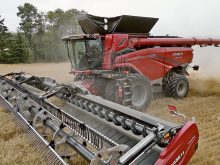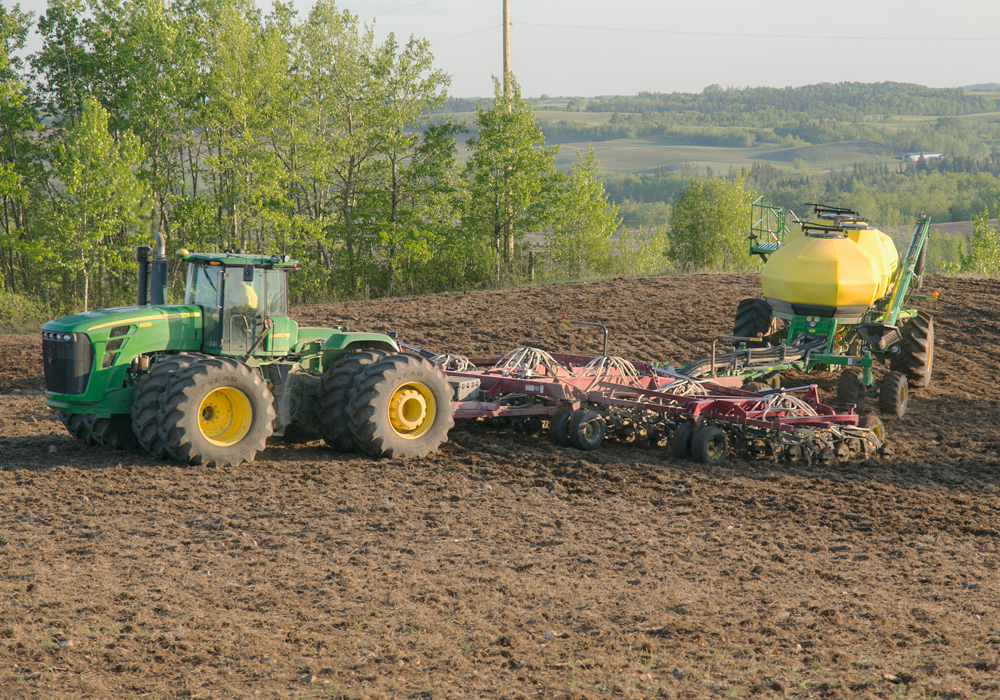VICTORIA – The U.S. Department of Agriculture’s interim rule requiring inspection of Canadian-grown fruits and vegetables being imported into the U.S. became a final rule on March 9.
In 1991, the USDA’s Animal and Plant Health Inspection Service (APHIS) exempted Canada from user fees for inspections of commercial transport and international air passengers, believing there was a low risk that plant or animal diseases or pests would enter the United States from Canadian products.
But in August 2006, APHIS introduced the interim rule requiring that agricultural imports from Canada be inspected. User fees for the inspections were also put into place.
Read Also

Agritechnica Day 2: The future of tractor power, building quicker crop apps and large farms and tech
Agritechnica Day 2: The future of tractor power, building quicker crop apps with Syngenta and large farms and tech
That rule has now become final and is applied equally to all countries exporting goods into the U.S., said APHIS public affairs specialist Alyn Kiel.
The move from an interim to final rule was due to the increasing number of products coming from Canada found to be carrying plant and animal pests or diseases, Kiel said.
Not all of the products may be grown in Canada. Rather, they arrive in Canada via ship or plane and are then re-exported to the U.S.
Data from three extensive inspection operations along the U.S.-Canada border (two at Buffalo, New York, and one at Blaine, Washington) was used to support the rule change.
The inspection “blitzes” resulted in numerous interceptions of prohibited or restricted articles including untreated Argentine citrus, mangoes and tropical fruits from Asia, according to an APHIS analysis released in February 2009.
Many other commodities from third world countries, such as meat, live birds and plants in soil, were also found.
And plant pests such as fruit flies, scales, and several species of mealy bugs were intercepted.
“One of our big pests of concern is the gypsy moth,” Kiel said.
Prohibited products get mixed in with legitimate exports, so it’s very difficult to evaluate an export, Kiel said from Riverdale, Maryland.
“Rarely are we able to precisely trace an established infestation by an invasive species to its country of origin,” states the analysis.
From 2001 to 2004, inspections at four airports (Calgary, Toronto, Vancouver and Montreal) showed that more than six percent of all U.S.-bound passengers (Canadian and non-Canadian origin) carried prohibited agricultural products, the analysis stated.
Most of these passengers were taking flights to California, Florida, Arizona and Texas, where the prohibited products could place major agricultural industries at risk.
APHIS will also inspect commercial vehicles that carry non-agricultural products since plant and animal diseases can be spread via items such as tires.
“There’s lots of vectors,” Kiel said.
Most U.S.-bound goods coming from Canada enter by truck or rail.
In 2007, goods entering by truck accounted for 50 percent of the value of all U.S. imports from Canada; goods entering by rail, 20 percent; by water, six percent; by air, four percent; and by other means (e.g. pipeline), 20 percent, according to analysis.
Between 1991 and 2007, the nominal value of agricultural imports increased from $3.3 billion in 1991 to $15.2 billion in 2007. Except in 2003, when the value declined by 0.6 percent, agricultural imports from Canada grew steadily, with an average annual increase in value of about 10 percent over the 17 years.
In addition to the growing volume of legitimate re-exports, shippers have incentive to mix third-country goods with Canadian-produced goods because of lower U.S. tariffs for goods of Canadian origin, according to the analysis.
Concern about the switch from an interim to final rule was muted from the B.C. Fruit Growers’ Association, representing 810 growers.
And the 690 member Canadian Produce Marketing Association did not respond to interview requests.
In 2008, $89.3 million in user fees were collected by U.S. agencies while it cost $98.7 million to operate the inspection program.














